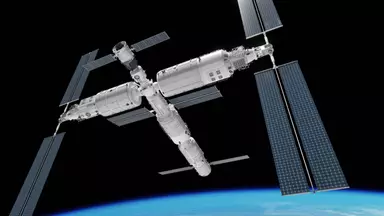Taikonauts have isolated a strain of bacteria with ‘unique abilities’ onboard the Chinese Tiangong Space Station which, according to a newly published paper, could benefit the study of life as it moves out of space.
Tiangong, the permanently crewed space station constructed by China and operated by the China Manned Space Agency, was launched in September 2021. It is roughly one-third the size of the International Space Station (ISS).
Four years after its launch, scientists have now reported that a novel strain of bacterium named Niallia tiangongensis has been found onboard.
The report is published in the International Journal of Systematic and Evolutionary Microbiology by the Beijing Institute of Spacecraft System Engineering.
It states that this bacterium ‘demonstrates a unique ability to hydrolyze gelatin suggesting that it can utilize gelatin as a substrate in nutrient-limited environments’.
Niallia tiangongensis, which doesn’t exist on Earth, is said to have inhabited the cockpit controls on the space station, according to the paper ‘Niallia tiangongensis sp. nov., isolated from the China Space Station’.


The Chinese Tiangong Space Station was launched in April 2021 (Shujianyang/Wikimedia Commons)
It’s also understood that the novel strain is closely related to the terrestrial bacterium, Niallia circulans.
This genus of Gram-positive, rod-shaped bacteria forms spores, meaning it can usually survive in harsh conditions.
Niallia circulans, characterised by a thick cell wall and absence of an outer membrane, is often found in soil, sewage and food.
The bacterium is known to cause serious infections, including abscesses and septicemia.
However, the New York Post writes that Niallia tiangongensis exhibits various mutations that could improve the study of life as it moves out into space.
The report states that experts from the China Space Station Habitation Area Microbiome Program collected swab samples from around the space station in May 2023.
These were frozen before being sent back to Earth for further study, the South China Morning Post states.
“This discovery highlights the complex and resilient nature of microbial life,” a researcher said. “Even in highly controlled environments like Tiangong, life finds ways to adapt and persist.”


Experts claim further research is vital to protect astronauts health (Astronaut Center of China)
At this point, it’s unclear whether or not Niallia tiangongensis developed and evolved on the space station, or whether it’s an unclassified species derived from Earth.
It’s understood that further testing is needed to determine whether or not it could harm taikonauts aboard Tiangong.
Researchers from the Shenzhou Space Biotechnology Group say further study of the novel strain is ‘essential’ in protecting space explorers’ health and wellbeing.
The new report comes a year after scientists revealed a bacterium found onboard the ISS had strangely mutated.
As per a study released in March 2024, a ‘niche’ strain of Enterobacter bugandensis was discovered onboard the ISS in 2018.
It’s understood it had become ‘distinct from its earthly counterparts’, with the report stating: “Enterobacter species act as opportunistic human pathogens, causing nosocomial infections with bacteremia, lower respiratory tract, osteomyelitis, sepsis, and urinary tract infection.
As to what ‘drives’ the bacteria, the study explained: “A hypothesis central to our study was that the singular nature of the stresses of the space environment, distinct from any on Earth, could be driving these genomic adaptations.”
Due to the bacteria affecting astronauts’ health, medical experts hoped the report would ‘offer a window into the microbial ecosystem dynamics within the ISS’.
Featured Image Credit: Getty Images/xia yuan
Topics: Space, International Space Station, Health, Science, World News, China
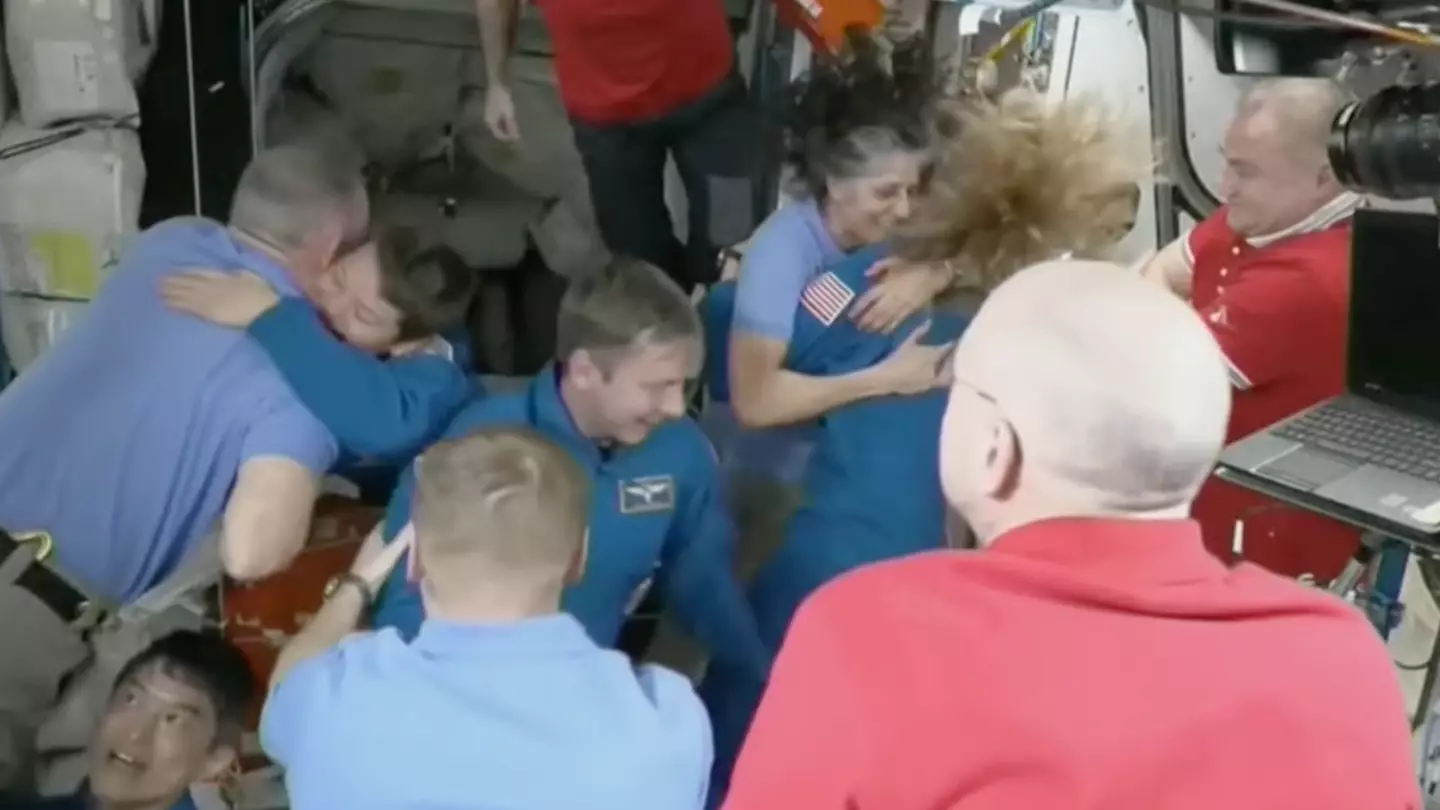

SpaceX’s Falcon 9 spacecraft has landed at the International Space Station to bring NASA astronauts Sunita ‘Suni’ Williams and Barry ‘Butch’ Wilmore.
The pair of astronauts got to the International Space Station last June with plans for an eight-day mission. Alas, when the spacecraft intended to bring them back was deemed unsafe, the astronauts were forced to settle in for a whopping nine months longer than planned.
In a bid to return the astronauts back to Earth, SpaceX’s Dragon spacecraft was launched with Crew-10 onboard from Launch Complex 39A (LC-39A) at NASA’s Kennedy Space Center in Florida on Friday (March 14).
And in an update shared by the National Aeronautics and Space Administration (NASA) earlier today (March 16), it revealed NASA astronauts Anne McClain and Nichole Ayers, JAXA (Japan Aerospace Exploration Agency) astronaut Takuya Onishi, and Roscosmos cosmonaut Kirill Peskov had arrived at the International Space Station.
“The SpaceX Dragon spacecraft docked to the orbiting complex at 12:04 a.m. EDT, while the station was roughly 260 statute miles over the Atlantic Ocean,” it detailed.
Another update revealed the hatches were opened between the space station and the SpaceX Dragon spacecraft at 1:35am EDT.
“McClain, Ayers, Onishi, and Peskov were welcomed by the Expedition 72 crew, including NASA astronauts Nick Hague, Don Petitt, Suni Williams, and Butch Wilmore, as well as Roscosmos cosmonauts Aleksandr Gorbunov, Alexey Ovchinin, and Ivan Vagner,” it said.
Live coverage of the docking was shared on Twitter by SpaceX and also covered by NASA.
The footage shows the crew members embracing in zero gravity.
McClain said: “Crew-10 has had a great journey up here and I cannot tell you the immense joy of our crew when we looked out the window and we saw the space station for the first time. That is such an amazing journey. You can hardly even put it into words.”
Williams told Mission Control: “It was a wonderful day. Great to see our friends arrive.”
SpaceX details the crew are not only there to help safely return Butch and Suni to Earth, but ‘during their time on the orbiting laboratory, the crew will conduct new research to prepare for human exploration beyond low-Earth orbit and to benefit humanity on Earth’ too.
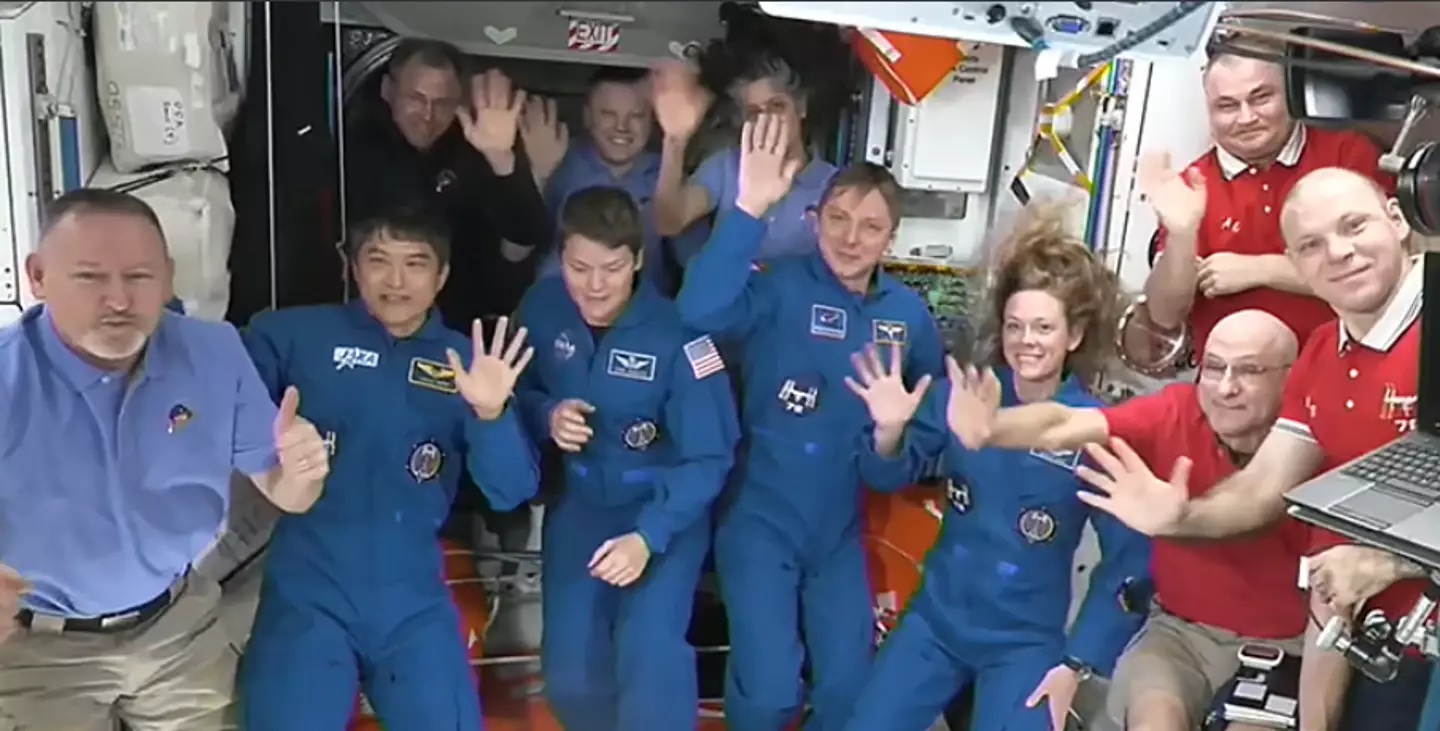

The crew (NASA)
It’s reported there will be a two-day handover before Wilmore and Williams make their way back to Earth – potentially prolonged if certain conditions aren’t met to ensure it’s safe to re-enter Earth’s atmosphere.
Manager of the ISS program, Dana Weigel, told reporters, as quoted by the BBC: “Weather always has to cooperate, so we’ll take our time over that if it is not favourable.”
Featured Image Credit: NASA
Topics: International Space Station, NASA, Space, SpaceX, US News, World News
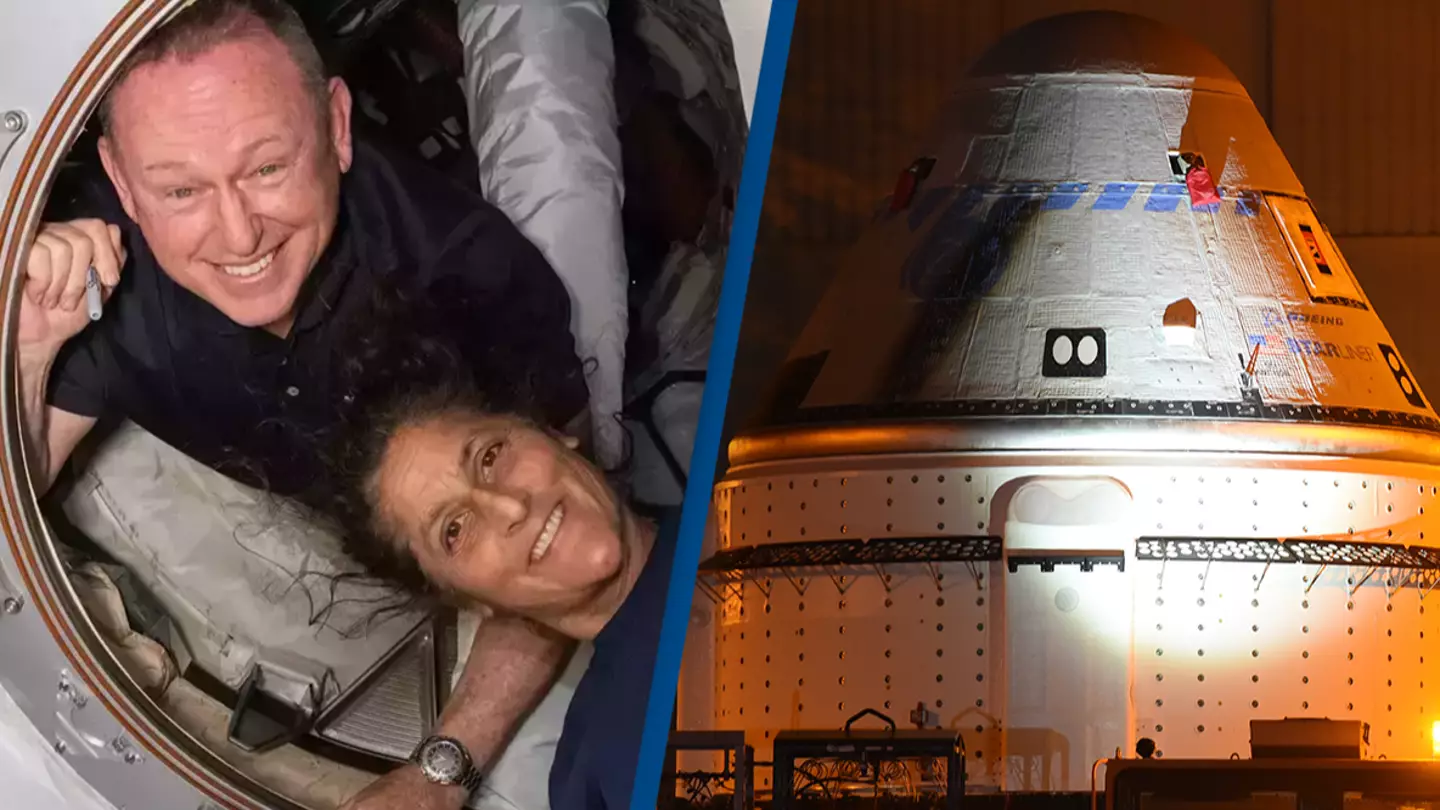

NASA has shared an update on the astronauts stranded on the ISS, admitting they ‘really should be making a call’ on how to bring them home.
In June, astronauts Barry Wilmore and Suni Williams embarked on what was just meant to be an eight-day mission, but things didn’t go to plan.
As they were flying to the International Space Station (ISS) they encountered several problems with the capsule.
The Boeing Starliner experienced five helium leaks, while five manoeuvring thrusters went dead.
The pair are now aboard the ISS with other astronauts, but they have no means of getting home currently.
While they may be stuck up in space for the time being, Wilmore and Williams are trying to keep spirits high.
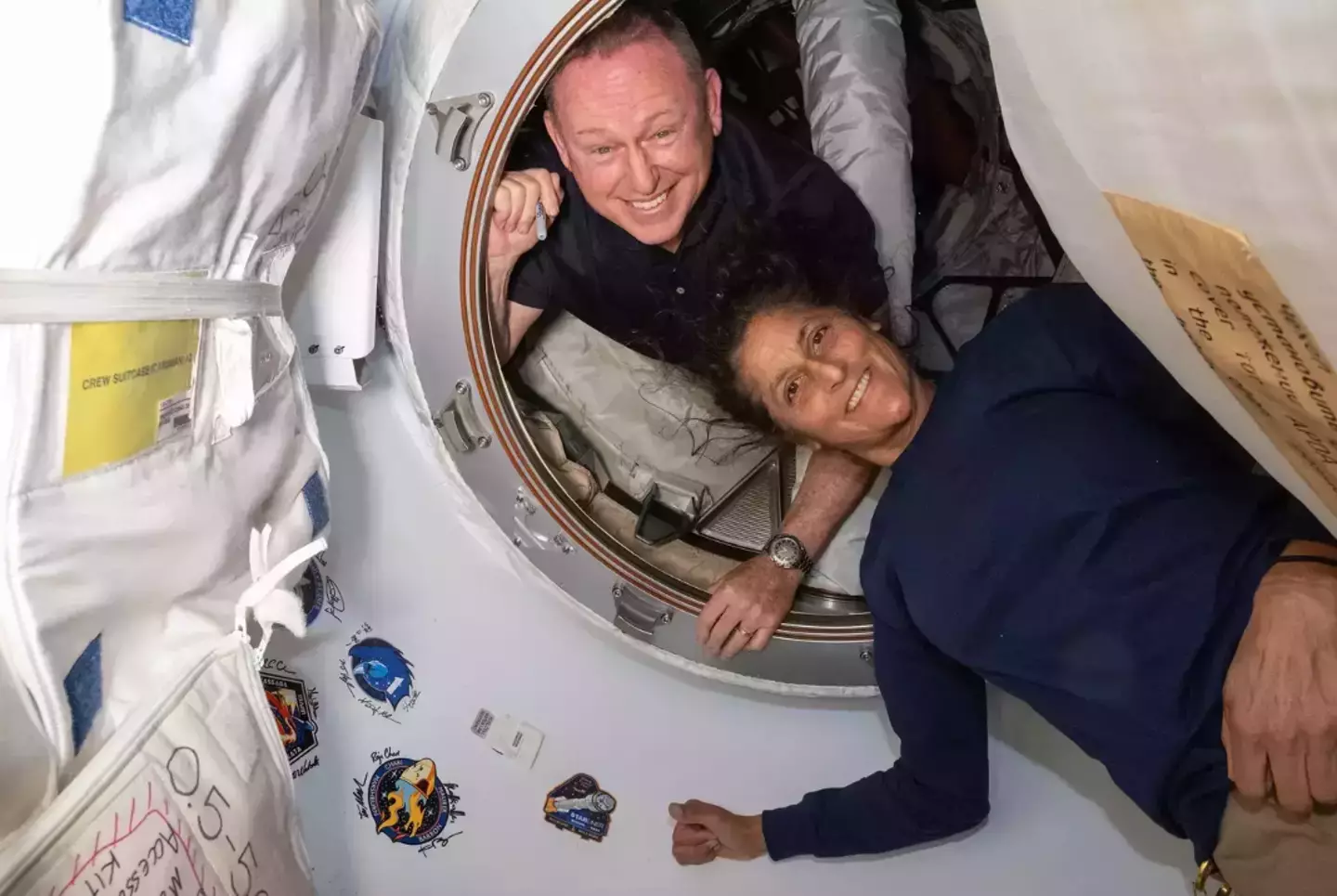

Barry Wilmore and Suni Williams’ mission has been a lot longer than expected. (NASA)
During a recent briefing with reporters, Williams said: “We’ve been thoroughly busy up here, integrated right into the crew.
“It feels like coming back home. It feels good to float around. It feels good to be in space and work up with the ISS team. So yeah, it’s great to be up here.”
While it was initially feared the pair would have only 72 days at most to survive, it’s now believed the astronauts may not return to Earth until 2025.
Steve Stich, NASA’s Commercial Crew Program manager, recently explained that if tests prove too risky to make the trip home on Starliner, they may be forced to return with SpaceX’s Crew-9 return flight.
The thing is, this won’t be ready to go until February.
NASA Associate Administrator for Space Operations Ken Bowersox provided a further update on the astronauts during a teleconference on Wednesday (14 August).
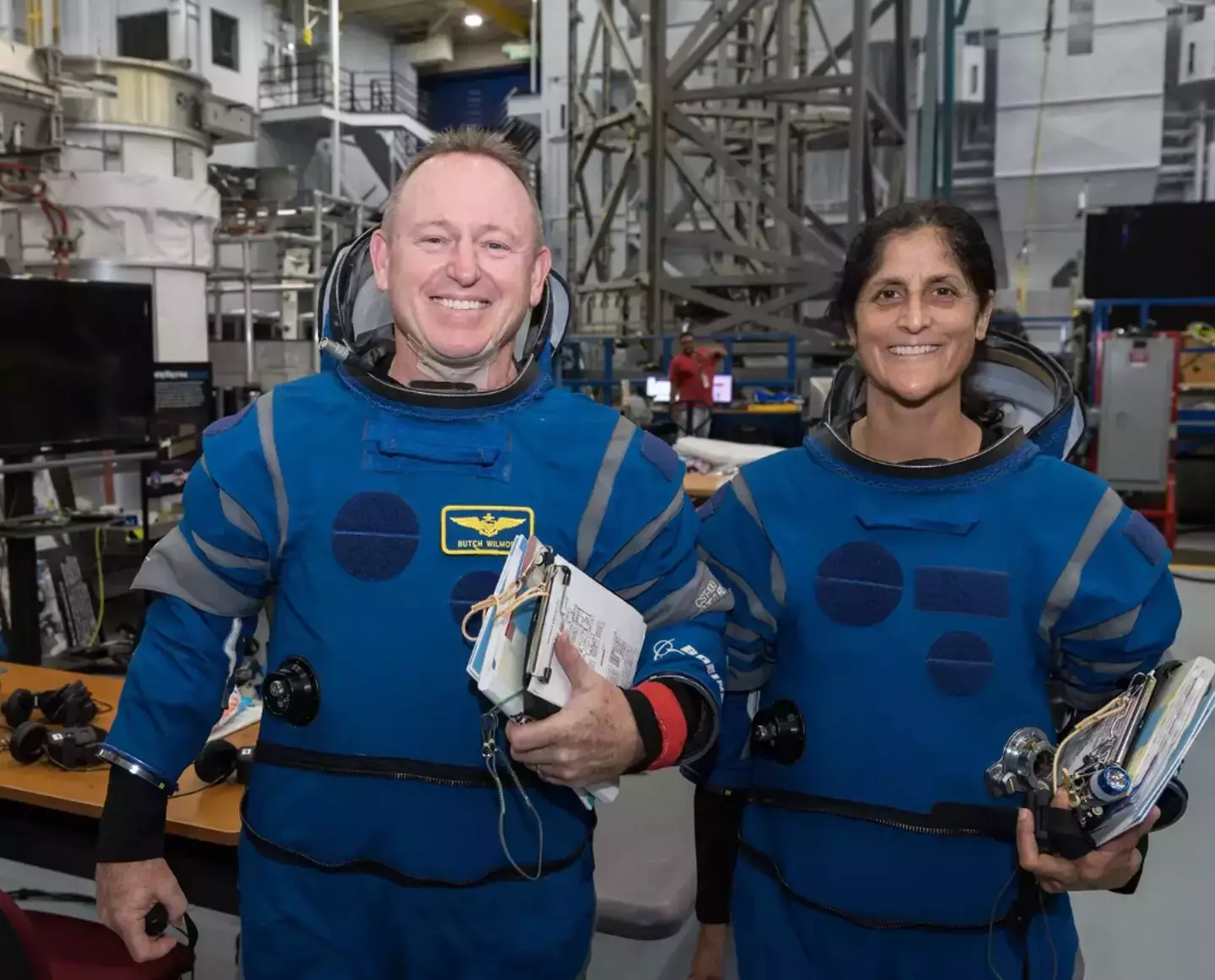

The astronauts may not return to Earth until 2025. (NASA)
“We’ve had very honest discussions with each other, and I am not surprised the Boeing team are 100% behind their vehicle,” the NASA guru said.
“But I can also tell you that they want to work with us in a partnership, which the NASA team thinks is important. When we get to a decision, we will work through it together.”
Bowersox added: “It’s getting a lot harder. We’re reaching a point where [by] that last week in August we really should be making a call, if not sooner.
“Butch and Suni are well engaged on the space station. It’s great to be there, enjoying the environment, eating that great space food and being able to look out the window.
“So I know they’re making the best of this time, but I’m sure they’re eager for a decision just like the rest of us.”
Featured Image Credit: NASA/ Paul Hennessy/Anadolu via Getty Images
Topics: NASA, Space, International Space Station, Science
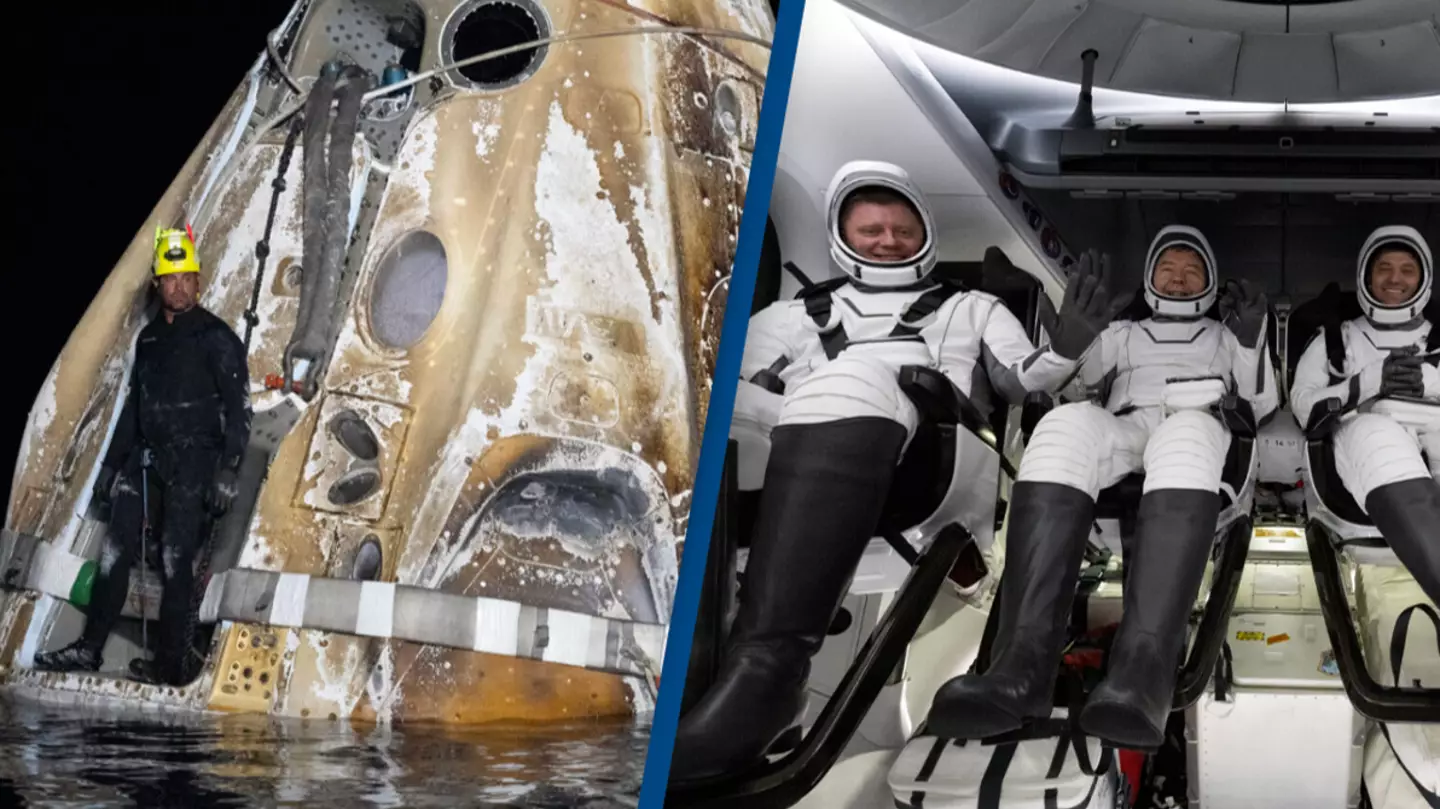

An astronaut has been left hospitalized and ‘under observation’ after spending a whopping 235 days in the stars.
Back in March, The Crew-8 mission headed to the International Space Station with NASA’s Jeanette Epps, Matthew Dominick and Michael Barratt, as well as Russia’s Alexander Grebenkin all on board.
The group spent a staggering 236 days out in space, before successfully splashing down in the Gulf of Mexico on Friday (25 October).
The astronauts thankfully landed safe and sound, embarking on a medical evaluations once they were back on the ground.
However, it was quickly discovered one of the astronauts had a medical issue, with all four flown to Pensacola’s Ascension Sacred Heart Hospital for further tests as a precaution.


The capsule splashed down successfully (Joel Kowsky/NASA via Getty Images)
Three crew members were sent home fairly quickly to the Johnson Space Center in Houston, NASA says, but one astronaut still remains in hospital at this stage.
The space agency has not detailed the identity of the astronaut.
NASA news chief Cheryl Warner said in a statement: “To protect the crew member’s medical privacy, specific details on the individual’s condition or identity will not be shared.
“The one astronaut who remains at Ascension is in stable condition under observation as a precautionary measure.”
A NASA spokesperson added: “We’re grateful to Ascension Sacred Heart for its support during this time, and we are proud of our team for its quick action to ensure the safety of our crew members.
“NASA will provide additional information as it becomes available.”
Despite the apparent medical issues now, all four crew members were seen smiling and waiving as they exited the SpaceX Dragon spacecraft off the coast of Florida.
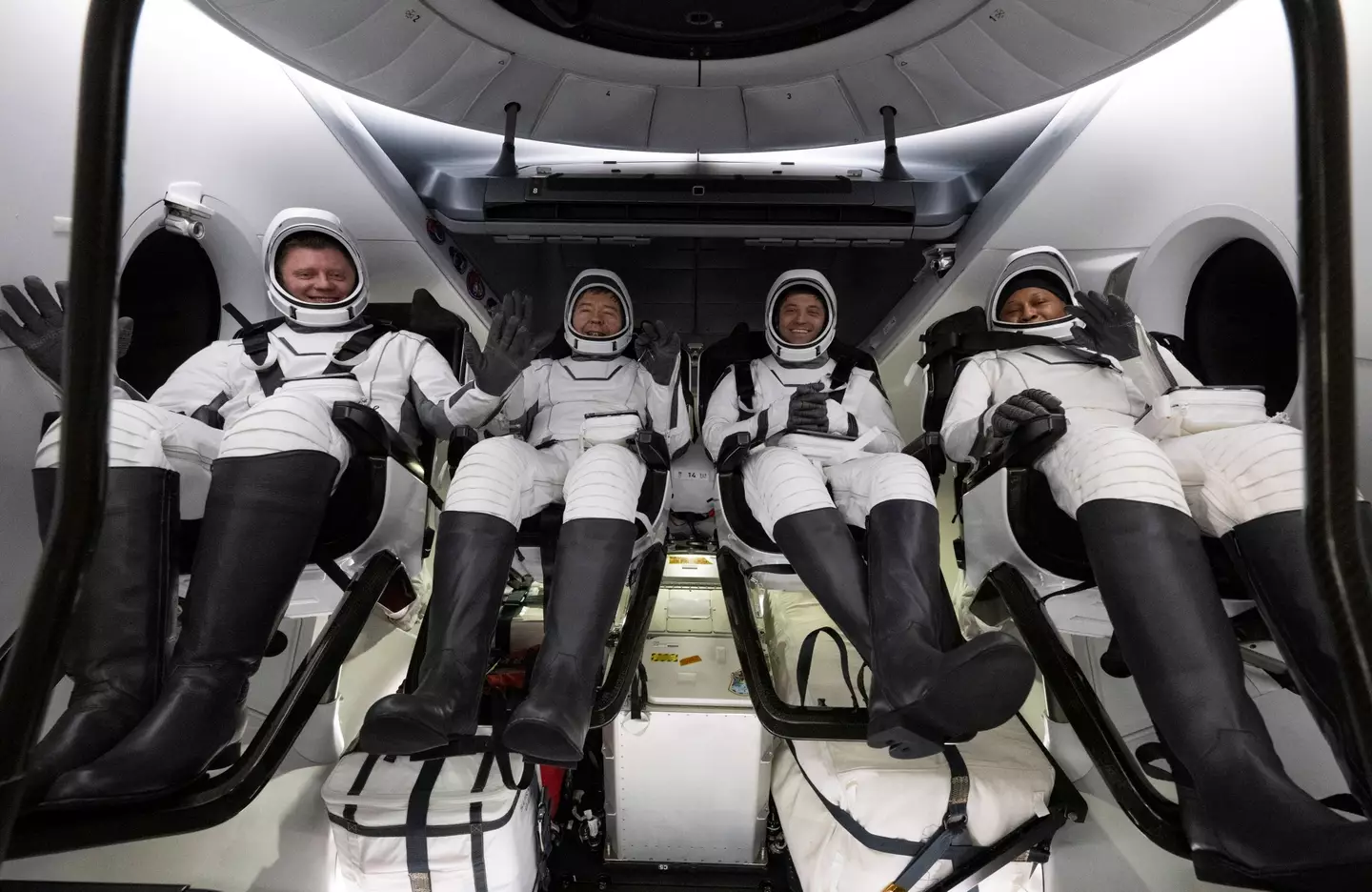

One astronaut has been left hospitalized (Joel Kowsky/NASA via Getty Images)
During a news briefing, prior the hospital admission, NASA’s deputy manager of the Commercial Crew Program, Richard Jones, said: “Right now the crew is doing great.
“They are going to spend a little bit of time on the recovery vessel going through their medical checks.
“They’ll soon be on their way back to Houston after all of those are done.”
The astronauts aboard Crew-8 were initially meant to be back on Earth two months ago, but problems with Boeing’s Starliner capsule and Hurricane Milton battering Florida delayed their progress.
“[Crew-8 was] the longest duration in space for a US crewed vehicle at 235 days,” Jones added.
NASA says it will provide updates on the astronauts health in due course.
Featured Image Credit: Joel Kowsky/NASA via Getty Images
Topics: Health, International Space Station, NASA, Science, Space
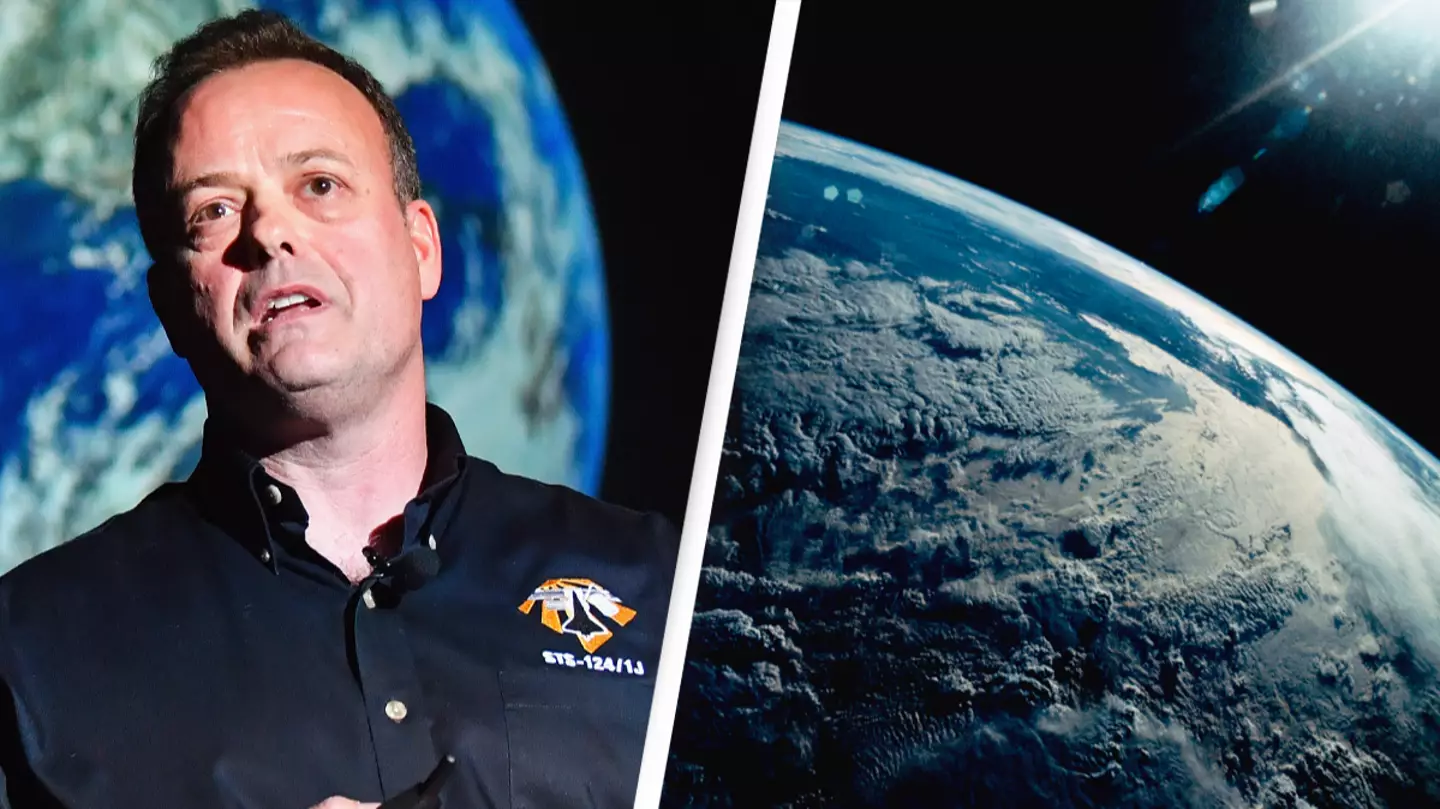

A former NASA astronaut has opened up about the ‘sobering realization’ he experienced when looking down at Earth from space.
Ex-NASA astronaut and author Ron Garan spent a whopping 178 days in space and it was a moment when he was looking down at Earth from the International Space Station which caused him to experience what’s known as the ‘Overview Effect’.
The ‘Overview Effect’ often takes place when astronauts go into space and look down and see Earth from that perspective for the first time. The experience ‘shift[s] […] the way astronauts view and think about our planet and life itself,’ NASA explains.
Garan has accumulated ‘more than 71 million miles in 2,842 orbits of our planet’ coming to a total of 178 days, however, it was the moment he looked down at Earth which made ‘certain things become undeniably clear’.
In an interview with Big Think, Garan explained: “We keep trying to deal with issues such as global warming, deforestation, biodiversity loss as stand alone issues when in reality they’re just symptoms of the underlying root problem and the problem is, that we don’t see ourselves as planetary’.
“When I looked out of the window of the International Space Station, I saw the paparazzi like flashes of lightening storms, I saw dancing curtains of auroras that seemed so close it was as if we could reach out and touch them and I saw the unbelievable thinness of our planet’s atmosphere.
“In that moment I was hit by the sobering realization.”
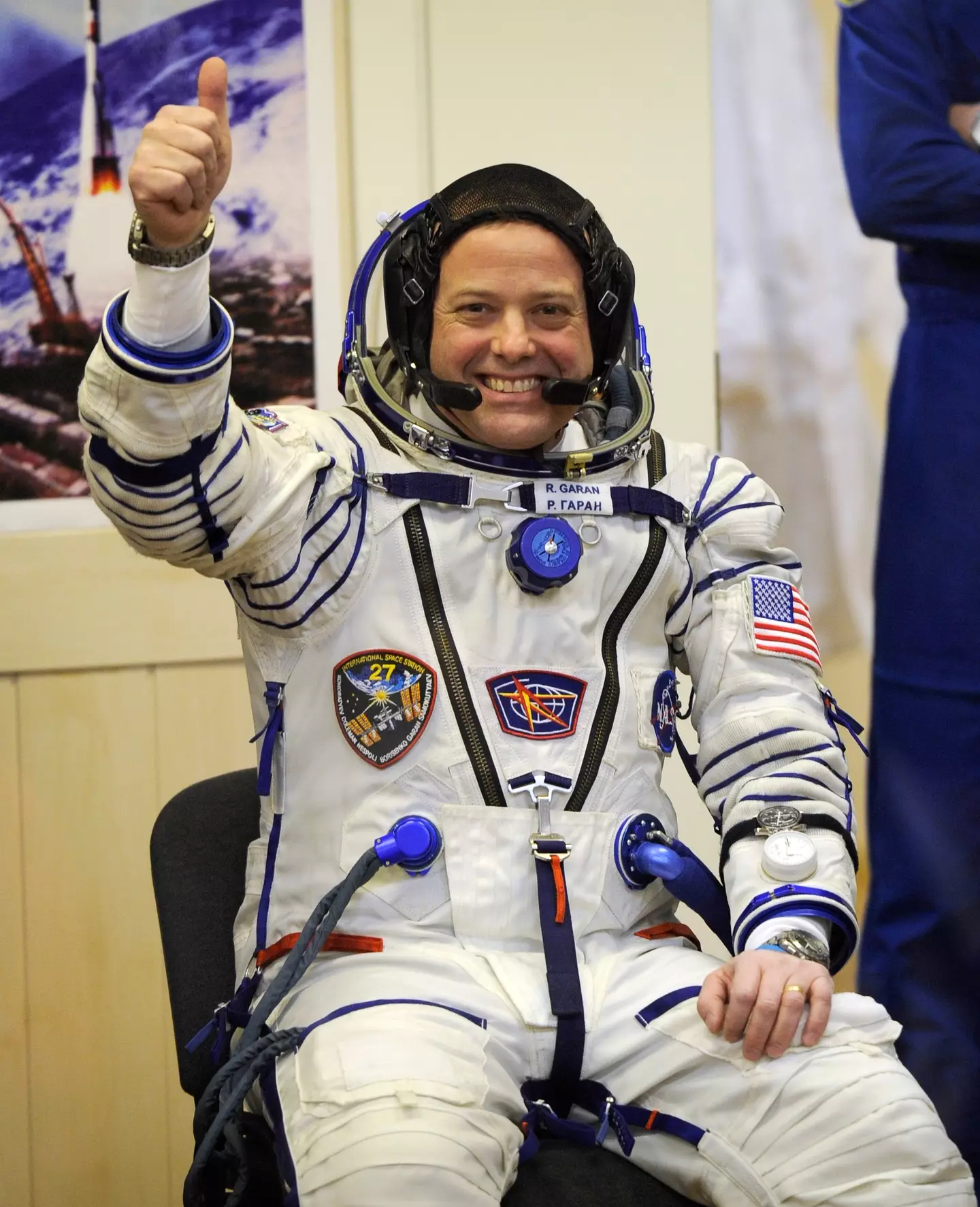

Ron Garan was in space for 178 days (Carla Cioffi/NASA via Getty Images)
Garan was hit by the realization that our planet – and every living thing on it – is being kept alive by a ‘paper thin layer’.
“I saw an iridescent biosphere teaming with life, I didn’t see an economy, but since our human-made systems treat everything including the very life-support systems of our planet as the […] subsidiary of the global economy, it’s obvious from the vanish point of space that we’re living a lie,” he continued.
The astronaut reflects on the moment as being a ‘light bulb that pops up’ when he realized ‘how interconnected and interdependent we all are’.
Since returning from his mission, Garan ‘continues to work towards a cleaner, safer and more peaceful planet,’ urging others: “We need to move from thinking, economy, society, planet to planet, society, economy. That’s when we’re going to continue our evolutionary process.
“[…] We’re not going to have peace on Earth until we recognize the basic fact of the interrelated structure of all reality.”
Featured Image Credit: Erika Goldring / Contributor/Bettmann / Contributor
Topics: Environment, International Space Station, Science, Space, World News, NASA, Earth, Climate Change
